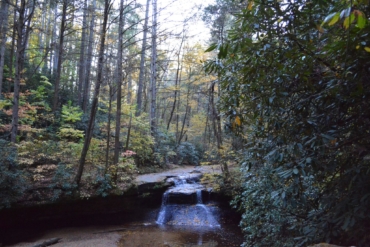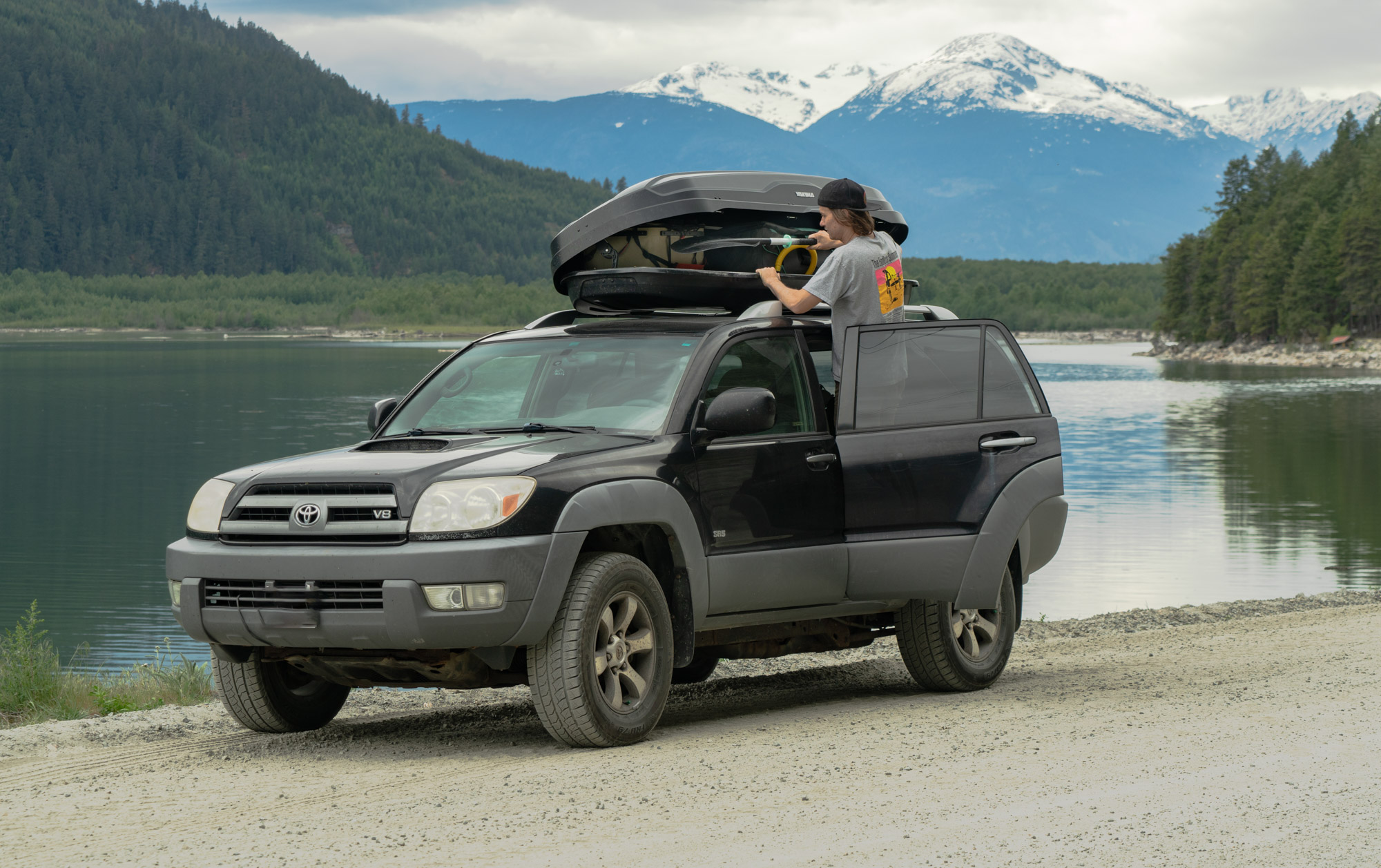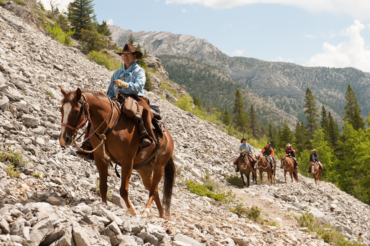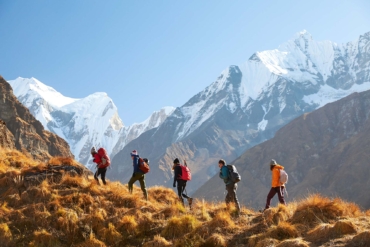Run away from the beach to experience the real islands of Tahiti. Off the beach, here are three adventures in Tahiti.
I claw my way through thickening jungle, following my guide who leads by hacking away with a machete. Vines, trees, and bursts of tropical flora larger than my face dim the harsh sunlight. I pull my body up enormous fallen logs and then slide down the slippery, moss-laden trunks to the muddy earth.
Despite hiking away from the ocean, I almost feel like I’m swimming in the sea. Sweat drips down my face and drenches my clothes. A cool freshwater stream crossing provides the only respite from this intensity. Finally, our efforts pay off at an unassuming volcanic black boulder spackled in bright-green moss and adorned with two ancient turtle petroglyphs.
Most people travel to the islands of Tahiti to relax on the beach or to surf perfect reef-breaking waves. But Tahiti offers adventurous challenges for hikers, trail runners, and explorers.
Once off the white sand beaches, the real French Polynesia reveals itself. There are inland adventures, races, and explorations, from muddy singletrack ascending the mountains on the island of Moorea to the coastal shoreline on the roadless section of Teahupoo. And they pair nicely with the luxury of recovering beachside.
Tahiti Off the Beach: Te Pari (Tahiti)
Only one road wraps around the island of Tahiti while another bisects the island. Despite the robust population and urban vibe in the capital city of Papeete, a section of the island remains unpaved. It’s only accessible by boat or foot. The hike to Te Pari (where the mountains meet the sea) is a breathtaking way to experience the wild side of Tahiti.
Adventurers typically take the 20km route as a 2-day backpacking trip. But you can — and I did — attempt it in one if you’re swift and crunched for time.
Be sure to hire a local guide. They are essential to managing the logistics (car dropoff and boat pickup), helping you stay on the unmarked route, timing the hike with the tides, and ensuring safe passage through private properties (complete with dogs defending their turf). I went with a guide from Te Mato Nui Excursions.
During Te Pari, you will encounter the diverse facets of Tahiti’s landscape. Wear shoes that can get wet and drain well, as this route oscillates between shorelines of broken coral. You’ll hike directly in the ocean and across the rivers flowing into the sea.
You also need high-performance traction to crawl up steep, slippery embankments in the jungle and to traverse narrow volcanic ledges — even though your guide may wear plastic jelly sandals (mine did!).
The route also includes fixed ropes, via ferratas, and sections that should have ropes and VF’s but don’t! Experience and confidence on class 4 terrain are ideal. Afterward, enjoy a quick boat ride past Tahiti’s infamous barrel Teahupo’o.
Race: Xterra Trail 45K and 13K (Moorea)
The Xterra Trail Tahiti race is considered a stepping stone to the Xterra World Championships, held annually in Maui. French Polynesia may not be known for its trail running, but its runners are fiercely competitive.
Racing within the slippery, narrow jungle trails felt like a roller derby match, with runners pushing their way around one another to move up in rank. The 45K and 13K races are held in June on the nearby island of Moorea (a 30-minute ferry away for only $15).
Both races will challenge you as you race through pineapple plantations before ascend high into the mountains for views above the coast. The 45K circumnavigates Mont Rotui and tours the center of the island with about 25,590 feet (7,800 m) of elevation gain. Meanwhile, the abbreviated 13K course still climbs over 2,000 feet.
Best of all, the event boasts world-class hospitality with a pre-race pasta feed, post-race lunch, and an after-party with traditional dancing, food, and awards on the beach.
Post-race, consider using your rest day to help save the coral reefs that make these islands spectacular. Coral Gardeners educates visitors about the dire effects of dying coral reefs, then takes them out in the water to snorkel and experience firsthand a method to help replant and restore them. You’ll even get to adopt and plant your own piece of coral.
Explore: Taputapuātea Marae UNESCO World Heritage Site (Ra’iātea)
Designated in 2017, Taputapuātea Marae is French Polynesia’s first UNESCO World Heritage site. It sits on the sacred island of Ra’iātea, which many consider the heart of the Polynesian Triangle.
A complex of ceremonial and funerary sites sits along the coral reef shoreline, flanked by forested valleys. In Polynesian culture, maraes are sacred places where the world of the living intersects with the worlds of the ancestors and the gods.
These square courtyards — made of volcanic stone and featuring rectangular alters with lines of larger stones as well as adornments ranging from petroglyphs to shells and flowers — were also used as political meeting grounds.
On an overcast and rainy 75-degree afternoon, part of French Polynesia’s winter, I ventured the few kilometers away from the resorts of Raiatea — a charming set of tucked-away bungalows that vastly contrast with the mega-resorts of the larger islands — to visit this piece of French Polynesian heritage.
It’s possible to walk around and explore this site without a guide. But hiring one is extremely helpful if you actually want to learn about the rich history of this ceremonial spot. My guide from French Polynesian Escapes, Tahiarii, answered just about any question I could think of — from anthropology to politics, endemic plants, food, economics, and culture.
In between glimpses at each marae, he led the way while playing a homemade flute. He shared his local insights into the progression of this spiritual epicenter becoming a UNESCO site. (This reminded me of similar conflicting views surrounding American sacred spaces like Bears Ears National Monument.)
Best of all, the view from Taputapuātea Marae is as spectacular as any of the island’s beaches and offers a greater understanding of life from past to present on these beautiful ocean-bound mountains.
The islands of Tahiti are small and close together, making travel to and from activities efficient and convenient. You can string together multiple “inland” excursions in one week and still have time for that beachside mai tai at sunset.










